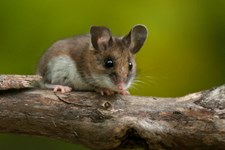News

March 30. - 2023
Warming Summer Temperature Impact Deer Mice via Thermoregulatory Trade-offs
Increasing temperatures as a result of global warming, could pose a thermoregulatory challenge to endotherms. The impact of these changes on physiology, health and distribution of animal species is advancing. The repercussions of persistent exposure to temperatures above the thermoneutral zone (TNZ) during the day and below during the night are uncertain. Could this mean that there is thermoregulatory trade off? A recent study looked at the consequences of the previously described effect to obtain insight into this issue by assessing body temperature and activity during exposure to warming diel temperature cycles, simulating transition from spring to summer.
Body temperature measured continuously for 8 weeks
Scientists from McMaster University in Canada implanted total of 20 deer mice (Peromyscus maniculatus) with Star-Oddi’s DST nano-T temperature loggers, 10 mice in a spring control group and 10 in the summer warming group. The loggers were implanted SC between the shoulder blades as proxy to core body temperature. The loggers were set to measure continuously for the duration of the 8 week study. Several other parameters were measured such as: respirometry, enzyme activity assays of muscle, and western blotting of various tissue.
Body temperature measured continuously for 8 weeks
Scientists from McMaster University in Canada implanted total of 20 deer mice (Peromyscus maniculatus) with Star-Oddi’s DST nano-T temperature loggers, 10 mice in a spring control group and 10 in the summer warming group. The loggers were implanted SC between the shoulder blades as proxy to core body temperature. The loggers were set to measure continuously for the duration of the 8 week study. Several other parameters were measured such as: respirometry, enzyme activity assays of muscle, and western blotting of various tissue.
Persistent hot climate during summer resulted in a dysregulation of body temperature
The control group exhibited a robust diel pattern of body temperature, characterized by an increase during the nocturnal active phase and a decrease during the daytime inactive phase. Conversely, the summer warming group displayed significant alternation in their diel rhythm from week 4 onwards. Unexpectedly, there were marked declines in body temperature following the shift to cooler nighttime temperatures during weeks 6-8. Furthermore, a complete reversal of the diel cycle occurred during this period, with substantially higher body temperatures during the inactive daytime phase compared to the active nighttime phase. See figure 2. below from the article.

Further results are provided in the article, published in Journal of Experimental Biology and can be accessed here.
